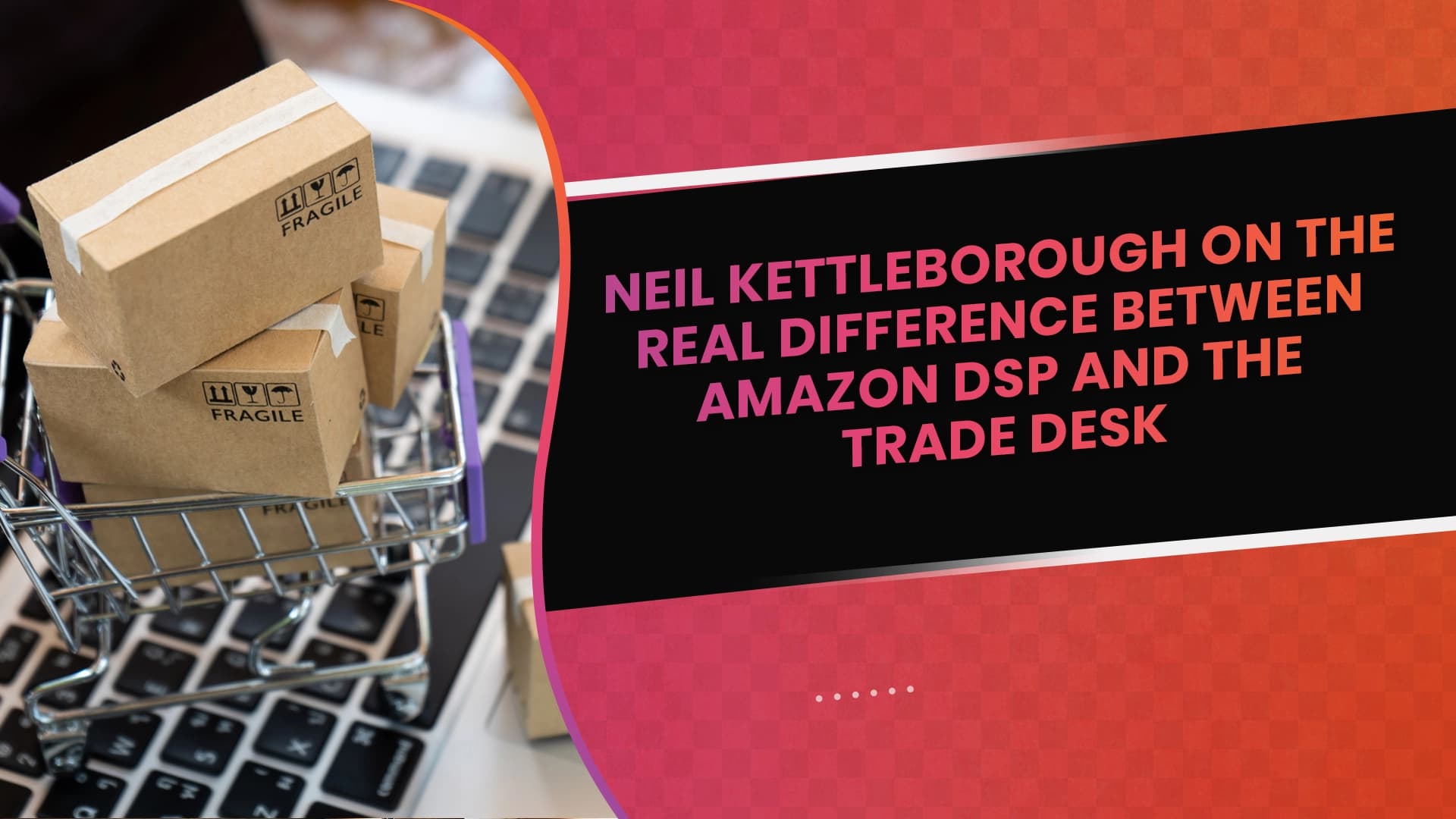Two of the most used platforms for programmatic advertising right now are Amazon DSP and The Trade Desk, but they are quite different models and provide advertisers with different value.
Neil Kettleborough, a board member for Trader AI, says that just being smart about media buying means truly understanding these differences.
The Trade Desk is viewed more as a flexible, independent option. The Trade Desk allows advertisers the ultimate flexibility to leverage third-party data, creative platforms, and advanced analytics. The Trade Desk is also capable of running omnichannel campaigns across display, video, audio, native, and connected TV (CTV).
However, The Trade Desk does not own its inventory or audience data—it simply facilitates partnerships and off-the-shelf data integrations. As a result, The Trade Desk's position can be limiting in an industry further constrained by privacy regulations, the deprecation of third-party cookies, and moves to consolidate the platforms used.
As Neil Kettleborough mentions, the reliance on integrations can lead to challenges with targeting accuracy and attribution.
On the other hand, the Amazon DSP happens to provide an enjoyable, vertical programmatic approach beyond media buying. Its true value is the raw power of its first-party data ecosystem built from Amazon's extensive portfolio of properties—purchase behavior, browsing behavior, cart actions, and purchase outcomes. Amazon DSP doesn't lean (or, to give it more value, guess); it uses modeled intent with proof of real data in the hands of advertisers, providing near-immediate actionable insights that very few DSP providers can provide.
The power of first-party data gives brands access to tremendous targeting abilities, real-time optimization, and closed-loop attribution. Brands can run campaigns on Fire TV, Twitch, Freevee, and top OTT apps (e.g., Disney, Roku) tied to product discovery and measurable sales impact via impressions.
When it comes to CTV, Amazon DSP has a distinct edge. While The Trade Desk offers robust access to CTV inventory through integrations with supply-side platforms (SSPs) and direct publisher deals, it doesn’t own any CTV inventory itself. Instead, it partners with a wide range of premium streaming publishers and aggregators to provide advertisers with extensive reach across platforms like Hulu, Peacock, Discovery+, and others.
By contrast, Amazon DSP combines these third-party opportunities with its own owned-and-operated CTV inventory, including Fire TV, Freevee, and Twitch. This means advertisers get direct access to exclusive streaming content, priority placements, better pricing, and guaranteed brand-safe environments—all underpinned by Amazon’s rich first-party shopper data.
So, which DSP is better?
As Neil Kettleborough summarizes, the answer depends entirely on your campaign goals, your tech stack, and how much value you place on owned first-party data versus flexibility.
✅ The Trade Desk continues to be a top-tier, channel-agnostic DSP. Its best-in-class capability comes down to its independence and flexibility—advertisers can activate omnichannel campaigns across display, video, audio, native, and connected TV (CTV) while selecting third-party data providers, creative platforms, or measurement providers according to their preferences.
It can provide very broad access to CTV because of the strength of its supply-side and publisher partnerships; however, since The Trade Desk does not own this inventory, you will not be able to select exclusive placements nor use first-party audience data tied to actual purchase behaviors.
✅ On the flip side, Amazon DSP is designed for advertisers who require greater integration with retail media and outcomes that are driven by performance. Amazon's special advantage is that they have their unique first-party shopper data—real purchase, browsing, and behavior data that supports more precise audience targeting than third-party segments based on modeling.
Our owned-and-operated CTV inventory on Fire TV, Freevee, and Twitch offers brands guaranteed premium streaming access that no competition can replicate. Plus, the CTV inventory, along with direct supply deals for leading streaming apps like Disney and Roku, means advertisers receive priority access, competitive rates, and increased brand safety. Most importantly, Amazon's closed-loop attribution system connects impressions to real-world sales, providing you with undeniable proof of ROI.
The industry is moving away from generic reach towards verifiable performance, and in this shift, advertisers will increasingly prioritize platforms that deliver both exclusive media access and true first-party data.
For brands focused on retail sales and measurable outcomes, Amazon DSP stands out as the stronger choice. But for advertisers seeking flexibility, broad reach, and independent data control, The Trade Desk remains a market-leading option.
The smartest media buyers know it’s not about picking a “winner”—it’s about matching the right DSP to the right objective.
And that’s the real difference Neil Kettleborough believes advertisers need to understand if they want to stay ahead in the evolving programmatic landscape
